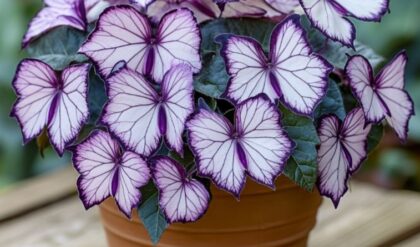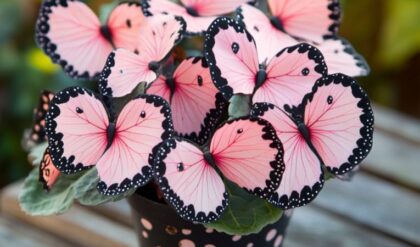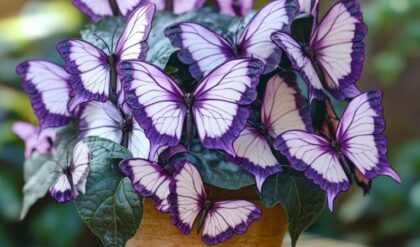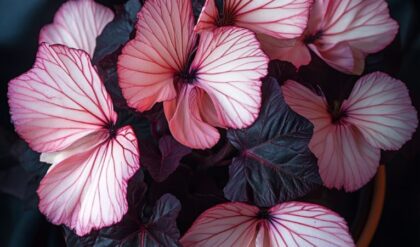The polka dot begonia, scientifically known as Begonia maculata, stands as a testament to nature’s artistic prowess. This captivating plant, with its distinctive foliage adorned with silvery spots against a deep green backdrop, has captured the hearts of plant enthusiasts and interior decorators alike. More than just a pretty face in the world of houseplants, the polka dot begonia represents a fascinating interplay of beauty, care, and symbolism that invites us to reflect on our relationship with nature and the spaces we inhabit.
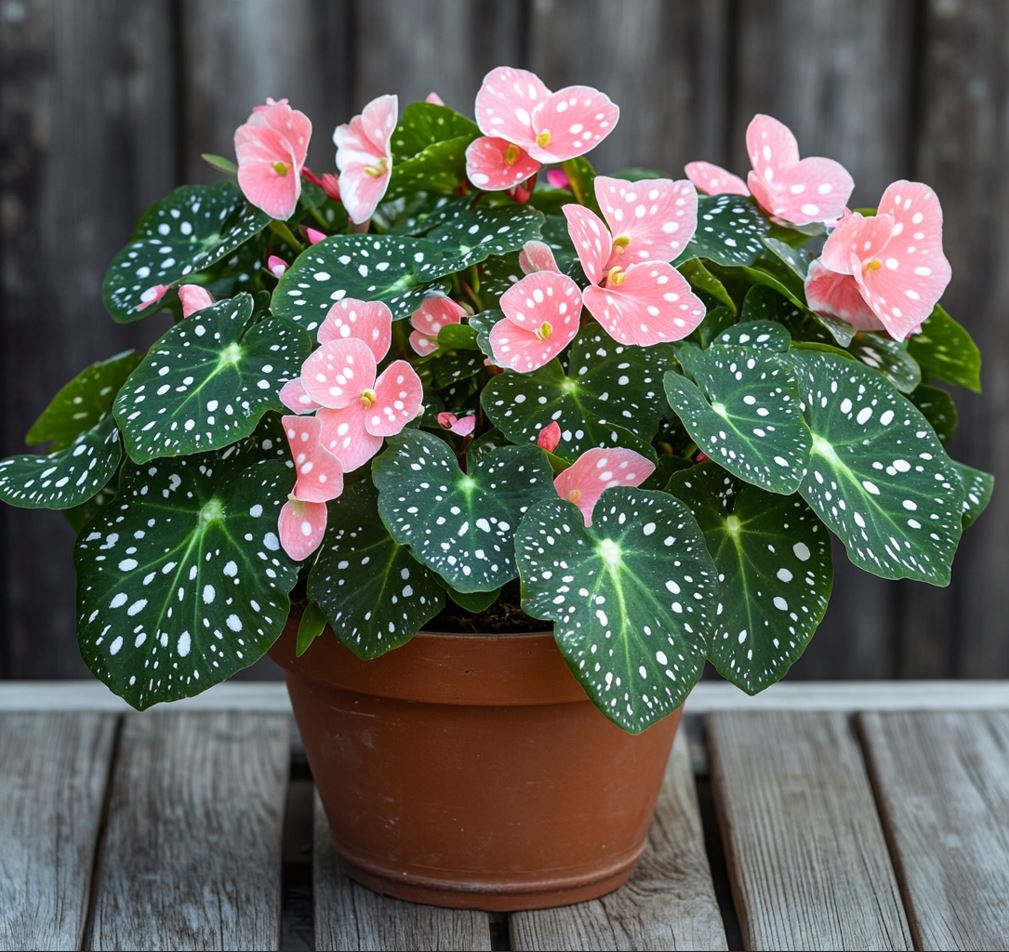
The Allure of the Polka Dot Pattern
The polka dot begonia’s most striking feature is undoubtedly its foliage. At first glance, one might mistake its leaves for a work of abstract art, with their seemingly random yet perfectly placed silver spots.
The Science Behind the Spots
The unique spotting pattern on the polka dot begonia’s leaves is not just a quirk of nature but a result of complex cellular processes. These spots, or maculations, are areas where the leaf tissue lacks chlorophyll, creating a striking contrast against the deep green background.
The formation of these spots is governed by genetic factors that control pigment distribution during leaf development. This process, while not fully understood, showcases the intricate ways in which plants can evolve to create visually stunning patterns that serve both aesthetic and functional purposes.
From an evolutionary perspective, these spots might serve to deter herbivores or enhance light absorption in the plant’s natural habitat. In our homes, they transform the polka dot begonia into a living piece of art, captivating our attention and sparking curiosity about the wonders of plant biology.
Visual Impact in Interior Design
The polka dot begonia’s unique appearance makes it a standout choice for interior design. Its bold pattern can serve as a focal point in minimalist spaces or complement more eclectic decor styles.
When strategically placed, a polka dot begonia can transform a room’s ambiance. In a sunlit corner, the play of light on its leaves creates an ever-changing display of shadows and highlights, adding depth and movement to static spaces. This dynamic quality makes the plant not just a decorative element but an interactive part of the living environment.
Interior designers often use the polka dot begonia to introduce an organic, whimsical element into spaces dominated by straight lines and solid colors. The plant’s ability to soften harsh edges and bring a touch of nature indoors aligns perfectly with current trends in biophilic design, which seeks to strengthen the connection between humans and nature in built environments.
Photographic and Artistic Inspiration
The polka dot begonia’s visually striking appearance has made it a favorite subject for photographers and artists. Its unique patterns and textures offer endless possibilities for creative expression.
In photography, the plant’s leaves provide a natural canvas for exploring light, shadow, and macro techniques. The contrast between the dark green leaf surface and the silvery spots creates opportunities for dramatic compositions that play with depth and perspective.
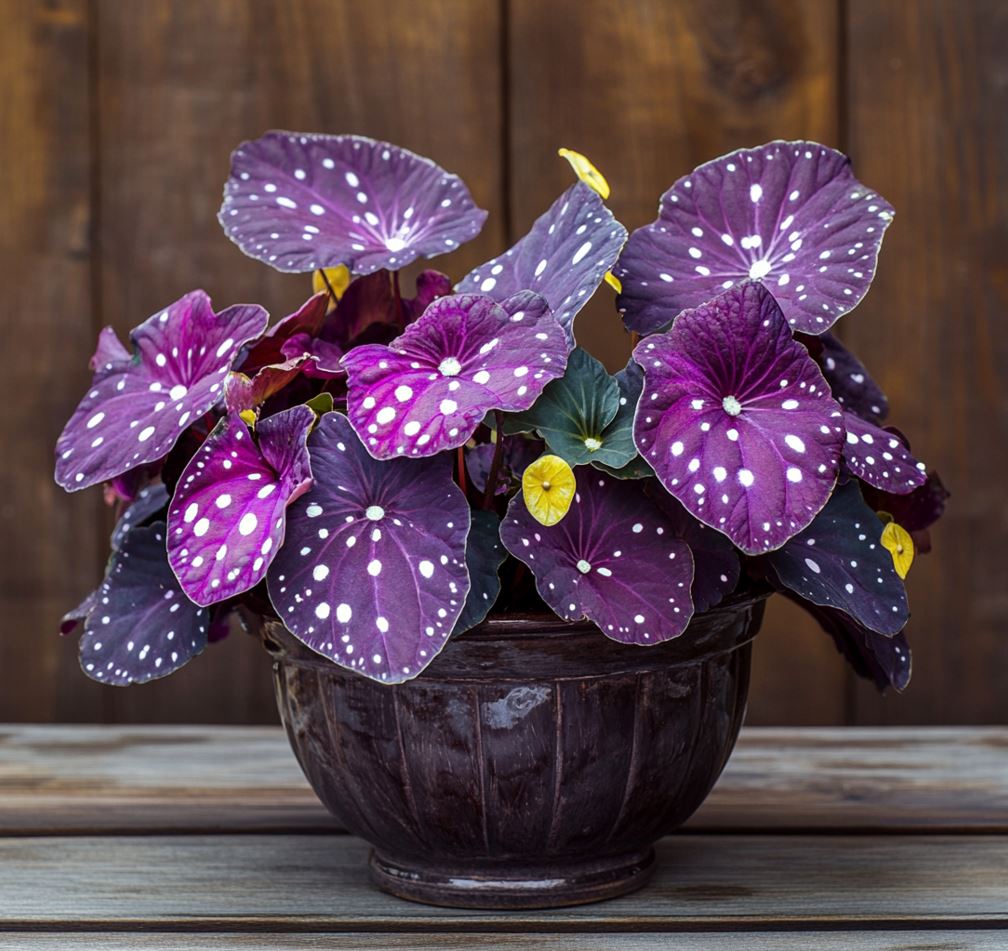
For painters and illustrators, the polka dot begonia serves as a muse for exploring patterns in nature. Its distinctive look has inspired everything from realistic botanical illustrations to abstract interpretations that capture the essence of its playful, spotted appearance.
The plant’s influence extends beyond visual arts into other creative fields. Textile designers have drawn inspiration from its patterns to create fabrics and wallpapers that bring a touch of natural whimsy to interior spaces. In the world of fashion, the polka dot begonia’s distinctive look has inspired prints and patterns that evoke the beauty of the natural world in wearable form.
Cultivating Success: Care and Maintenance
While the polka dot begonia’s beauty is undeniable, maintaining its health and vibrancy requires a nuanced approach to care. Understanding and meeting its specific needs is key to enjoying this plant’s full potential.
Creating the Ideal Environment
The polka dot begonia thrives in conditions that mimic its natural habitat. Originally from the tropical and subtropical regions of Brazil, this plant prefers warm, humid environments with bright, indirect light.
Temperature plays a crucial role in the plant’s well-being. Ideal daytime temperatures range from 65°F to 75°F (18°C to 24°C), with slightly cooler nighttime temperatures. Exposure to temperatures below 60°F (15°C) can cause stress and damage to the plant.
Humidity is another critical factor. The polka dot begonia prefers high humidity levels, ideally between 50% and 70%. In drier environments, regular misting, using a pebble tray filled with water, or employing a humidifier can help maintain the moisture levels these plants crave.
Light requirements are specific and crucial for maintaining the plant’s distinctive coloration. Bright, indirect light is ideal. Direct sunlight can scorch the leaves, while insufficient light can lead to leggy growth and a loss of the vibrant leaf coloration. An east-facing window often provides the perfect balance of light throughout the day.
Watering Wisdom
Proper watering is perhaps the most critical aspect of polka dot begonia care. These plants prefer consistently moist soil but are susceptible to root rot if overwatered.
The key is to allow the top inch of soil to dry out between waterings. This usually translates to watering once or twice a week, depending on environmental conditions. However, it’s essential to adjust watering frequency based on factors like humidity, temperature, and the plant’s growth rate.

Using well-draining soil is crucial for preventing water-logged roots. A mix designed for African violets or a custom blend of potting soil, perlite, and orchid bark can provide the ideal balance of moisture retention and drainage.
During watering, it’s best to avoid getting water on the leaves, as this can lead to fungal issues. Instead, water directly at the soil level or use a bottom-watering technique to encourage strong root growth.
Nutrition and Fertilization
Like all plants, the polka dot begonia requires proper nutrition to thrive. During the growing season (spring and summer), fertilize every two to four weeks with a balanced, water-soluble fertilizer diluted to half strength.
It’s important not to over-fertilize, as this can lead to salt buildup in the soil and damage to the roots. In winter, when growth slows, reduce or stop fertilization altogether to prevent nutrient burn.
Occasionally flushing the soil with plain water can help prevent the accumulation of mineral salts from fertilizers, ensuring the plant’s root system remains healthy.
The Art of Propagation and Growth
One of the joys of owning a polka dot begonia is the ability to propagate and share this beautiful plant with others. Understanding the propagation process not only allows you to expand your collection but also deepens your connection with the plant’s life cycle.
Stem Cutting Propagation
The most common and straightforward method of propagating polka dot begonias is through stem cuttings. This process allows you to create new plants that are genetically identical to the parent plant.
To begin, select a healthy stem with at least two nodes (the points where leaves emerge from the stem). Using clean, sharp scissors or pruning shears, make a cut just below a node. Remove the lower leaves, leaving only the top one or two sets.
Place the cutting in a small container filled with water, ensuring that at least one node is submerged. Position the container in a warm, bright spot out of direct sunlight. Change the water every few days to keep it fresh and prevent bacterial growth.
Within a few weeks, you should see roots developing from the submerged nodes. Once the roots are about an inch long, the cutting is ready to be planted in soil. Use a well-draining potting mix and keep the soil consistently moist as the new plant establishes itself.
Leaf Cutting Method
For those looking for a more challenging propagation method, leaf cuttings can be an interesting alternative. This method involves using just a leaf to generate an entirely new plant.
Select a healthy, mature leaf and cut it off at the base where it meets the stem. Trim the leaf into a triangle shape, with the base of the triangle being the cut end of the leaf stalk.
Insert the cut end about an inch deep into moist, well-draining potting soil. Cover the container with clear plastic to create a humid environment, and place it in a warm location with bright, indirect light.
After several weeks, you may notice small plantlets forming at the base of the leaf cutting. Once these plantlets are large enough to handle, they can be carefully separated and potted individually.
Understanding Growth Patterns
As your polka dot begonia grows, it’s essential to understand its natural growth patterns to ensure it maintains its attractive shape and continues to thrive.
These plants have a naturally bushy growth habit, with new stems emerging from the base. To encourage fuller growth, pinch back the growing tips of young plants. This promotes branching and results in a more compact, lush appearance.
As the plant matures, it may become leggy, especially if it’s not receiving enough light. Regular pruning can help maintain its shape and promote new growth. Always make cuts just above a node to encourage new branching from that point.
The Polka Dot Begonia in Culture and Society
Beyond its ornamental value, the polka dot begonia has carved out a unique place in culture and society, influencing various aspects of human life and creativity.
Symbolism and Cultural Significance
In the language of flowers, begonias generally symbolize caution or a warning about future misfortunes. However, the polka dot begonia, with its distinctive appearance, has taken on additional meanings in contemporary culture.
Its unique spotted pattern has come to represent individuality and the beauty of imperfection. In a world that often values uniformity, the polka dot begonia stands as a reminder that uniqueness can be strikingly beautiful.
In some cultures, the plant is seen as a symbol of harmony and balance. The contrast between the dark leaves and light spots is interpreted as a representation of the yin and yang concept, embodying the idea that opposing forces can coexist beautifully.
Influence on Design and Fashion
The polka dot begonia’s distinctive pattern has made waves in the world of design and fashion. Its influence can be seen in textile patterns, wallpaper designs, and even haute couture collections.
Fashion designers have drawn inspiration from the plant’s spotted leaves to create textiles and prints that bring a touch of natural whimsy to clothing and accessories. The organic, irregular pattern of the spots offers a refreshing alternative to traditional polka dot designs, adding depth and sophistication to fashion pieces.
In interior design, the polka dot begonia has inspired a range of products beyond just the live plant. Throw pillows, area rugs, and wall art featuring stylized representations of the plant’s leaves have become popular ways to incorporate its unique aesthetic into home decor.
Role in Environmental Education
As awareness of environmental issues grows, plants like the polka dot begonia play an important role in educating people about biodiversity and the importance of preserving tropical ecosystems.
The plant’s care requirements provide an opportunity to teach about the specific conditions of tropical environments and the adaptations plants develop to thrive in these habitats. This knowledge can foster a deeper appreciation for the complexity and fragility of rainforest ecosystems.
In educational settings, from elementary schools to universities, the polka dot begonia serves as a living example for lessons in plant biology, ecology, and even the basics of genetics. Its unique appearance makes it an engaging subject for students, helping to spark interest in botanical sciences and conservation efforts.
Conclusion
The polka dot begonia is far more than just a visually striking houseplant. It represents a fascinating intersection of nature’s artistry, horticultural science, and human creativity. From its role in interior design to its significance in cultural symbolism and environmental education, this plant touches on many aspects of our lives.
As we cultivate and admire the polka dot begonia, we’re not just growing a plant; we’re nurturing a deeper connection to the natural world. Its care teaches us patience, attention to detail, and the rewards of understanding and meeting the needs of living things. In our increasingly urbanized and digital world, the polka dot begonia serves as a beautiful reminder of the complexity, diversity, and wonder of nature.
Whether you’re a seasoned plant enthusiast or a curious newcomer to the world of houseplants, the polka dot begonia offers a unique and rewarding experience. Its distinctive appearance, fascinating care requirements, and cultural significance make it a truly special addition to any home or collection. As we continue to explore and appreciate the wonders of the plant kingdom, the polka dot begonia stands out as a living masterpiece, inviting us to pause, observe, and marvel at the intricate beauty of the natural world.


